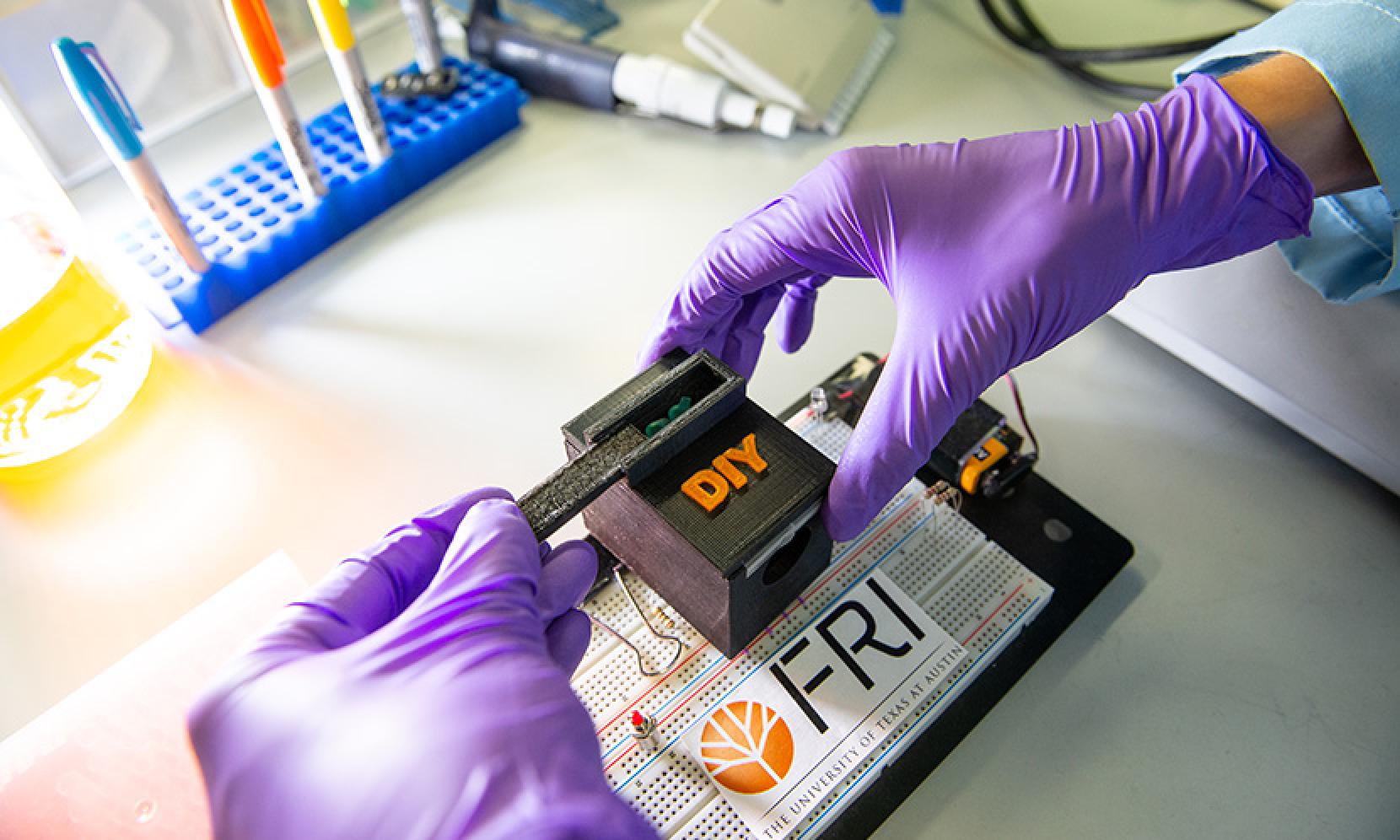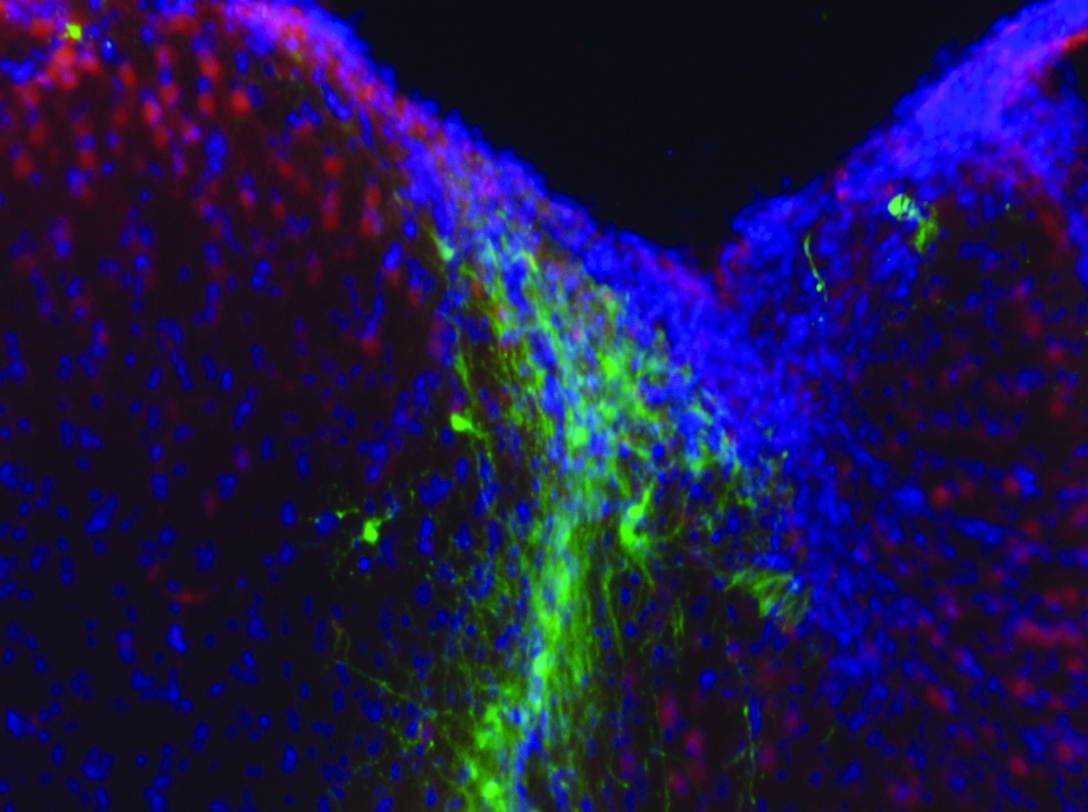
Scientists at a U.S. Army research center have modified an assay that tests whether or not a sample of mosquitoes harbors the virus responsible for the disease known as chikungunya (CHIKV), long a problem in the Old World tropics but recently established in the Americas.
They did not make the assay — a commercial company called VecTOR Test Systems, Inc. did. Instead, the Army researchers tested the test to prove that it works — no small task when dealing with a virus that comes in multiple guises. Their assay is described in an article in the Journal of Medical Entomology.
Health workers now have what the scientists call a “quick and dirty” way to detect the presence of the CHIKV virus within an hour, rather than waiting for results of laboratory tests that take days, even weeks. It’s done with a chemical dipstick, the same kind of simple tool used in a pregnancy test. If the test is positive, measures to control and contain the disease can be mobilized and started immediately, which is important because no vaccine or specific treatment for chikungunya exists.
Evaluation was carried out under epidemiologist Michael J. Turell, PhD, a principal investigator for 30 years at the U.S. Army Medical Research Institute of Infectious Diseases (USAMRIID) in Fort Detrick, Maryland. Turell’s research has focused on factors impacting the ability of mosquitoes to transmit various arboviruses, a term for viruses transmitted by arthropods such as mosquitoes, sandflies, and ticks. In addition, he has worked on the development of vaccines for several mosquito-borne viruses and on assays that detect arboviruses.
The larvae of mosquitoes that transmit CHIKV find excellent harborage in containers that hold standing water, such as spare tires, empty pails, and saucers under flower pots. Thus, the mosquitoes involved prosper among high concentrations of people. People living in tropical shanty towns, with open windows and no air conditioning, are prime targets.
“Chikungunya” is a term used by people of the Makonde Plateau, between Tanzania and Mozambique, where the disease was discovered in 1952. It means, “that which bends up,” referring to the way arthritis caused by the disease crooks posture of the victim’s body. Symptoms of chikungunya can be as brutal as its name is to pronounce, although it is seldom fatal. Victims experience fever and pain and swelling of muscles and joints. Headache and rash may occur. The disabling impact can last for months.
The chikungunya virus belongs to a group known as alphaviruses, at least 30 of which can infect humans and other vertebrates, causing diseases such as equine encephalitis and a variety of rash-accompanied fevers. CHIKV is transmitted by mosquitoes of the genus Aedes, chiefly Aedes aegypti, the bane of humans in the tropics because it also carries viruses responsible for yellow fever and dengue fever. Scientists have identified three different lineages — genetically-related groups — of CHIKV linked to geographical areas: Asia, West Africa, and East/Central/South Africa. All of the lineages exist outside the geographical areas after which they are named. A member of the Asian lineage, for example, has infected people in the Americas.
Like many tropical diseases, chikungunya has been rampant in the developing world for many years, but only became the focus of intensive research after it threatened western nations. An outbreak on Reunion Island, a French Department in the Indian Ocean, during 2005 and 2006 attracted attention largely because it’s a hot tourist destination for Europeans. Perhaps not by coincidence, the first transmission from mosquitoes in the Americans occurred in December 2013, on the French half of St. Martin, and island in the Caribbean. Reported cases in the Americas have now passed 1.5 million.
It began to show up in the United States during 2014, with nearly 2,500 cases reported from 46 states. Nearly all, however, were in travelers who picked up the infection in the tropics. Eleven people on the U.S. mainland, all in South Florida, contracted the disease directly from mosquitoes in the U.S.
Read more: New Device Allows Chikungunya Test Results in an Hour
The Latest on: Chikungunya
[google_news title=”” keyword=”Chikungunya” num_posts=”10″ blurb_length=”0″ show_thumb=”left”]
via Google News
The Latest on: Chikungunya
- Health officials issue warning over outbreaks of virus: 'Poses a significant risk'on May 7, 2024 at 6:30 pm
It's part of a concerning trend of increasing incidence rates for vector-borne diseases. Health officials issue warning over outbreaks of virus: 'Poses a significant risk' first appeared on The Cool ...
- Chikungunya Virus and Prospects for a Vaccineon May 5, 2024 at 5:00 pm
No writing assistance was utilized in the production of this manuscript. Chikungunya virus (CHIKV) causes an acute febrile disease characterized by severe arthralgia in the small joints.
- Vaccine Partners Turn Rivals With First Shot for Advancing Viruson May 4, 2024 at 11:00 pm
Two European partners will soon be vying for dominance in a new battleground: vaccines to protect travelers against a painful viral illness transmitted by mosquitoes.
- Chikungunya Newson May 4, 2024 at 5:00 pm
The findings could lead to a universal therapy or vaccine for the ... Dec. 2, 2021 — Dengue, Chikungunya, and Zika viruses have all been recorded in Mexico; however, recent diagnostic advances ...
- Drive begins for chikungunya, dengue as cases rise to 5on May 3, 2024 at 10:28 pm
State health department in Dehradun initiates a campaign to combat rising chikungunya cases and prepare for the upcoming dengue season. Measures include daily inspections, larvicide spraying, and ...
- Valneva Gears Up To Launch The First Ever Chikungunya Virus Vaccineon May 1, 2024 at 3:00 am
Ixchiq is a single shot live attenuated vaccine for the prevention of chikungunya virus vaccine which provided immunity to over 98% of participants in a phase 3 clinical trial. The vaccine was well ...
- Immune cell interaction study unlocks novel treatment targets for chikungunya viruson April 29, 2024 at 12:15 pm
Researchers have long known that the body's immune system plays a critical role in fighting off chikungunya virus (CHIKV), but how exactly immune cells coordinate their response has been a ...
- Uttarakhand Health Department issues guidelines to prevent dengue and chikungunyaon April 29, 2024 at 9:26 am
Taking note of the dengue and chikungunya patients in the state, the Uttarakhand health department has issued guidelines to all the districts for their prevention and treatment. Guidelines of 20 ...
- Bavarian Nordic Initiates Rolling Submission of Biologics License Application with FDA for its Chikungunya Vaccine Candidateon April 29, 2024 at 6:41 am
Bavarian Nordic will submit additional data over the coming months, aiming to complete the BLA submission before the end of the first half of 2024 to support a potential FDA approval of the vaccine in ...
- Tag: Chikungunyaon April 19, 2024 at 9:09 am
A new clinical study shows promising results of a Phase III chikungunya vaccine trial, the first time the shot has been tested in humans. If approved by regulators, the vaccine would have the ...
via Bing News










